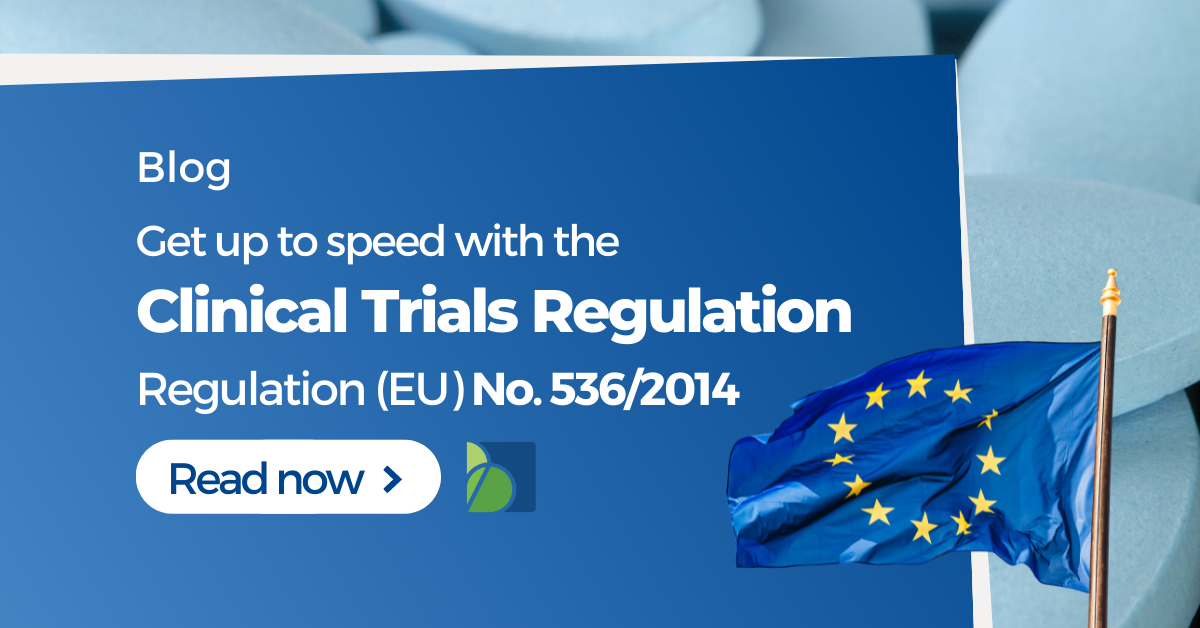The EU CTR is the new Regulation that govers all interventional clinical trials using human medicinal products. By implementing this Clinical Trials Regulation (CTR) early 2022, the European Commission hopes to establish a better environment for clinical trials in the EU. By bringing all submission and evaluation procedures under one roof, it intends to promote collaboration and openness within and between Member States, as well as to raise overall safety standards. Additionally, it aims to simplify and expedite clinical trials conducted within the EU in order to hasten the availability of novel treatment alternatives and to keep the EU attractive to clinical trial sponsors. This article explores the major obstacles you may face when you investigate new Clinical Trials Regulation and tries to assist you in preparing your business.
EU Clinical Trials Regulation on EMA website for updates on the process.
The difference in national regulatory standards for clinical trial authorization among EU member states contributes to the price and complexity of pharmaceutical product development. The EU CTR tries to relieve some of this complexity by standardizing licensing, evaluating, and monitoring clinical trials throughout EU member states. While this noble attempt will fix these disparities, substantial changes also influence how clinical trial applications are submitted. Therefore, enterprises need to prepare adequately to adopt the Clinical Trials Regulation, bearing operational problems in mind.
A Regulation instead of a Directive
Before 2004, clinical trial procedures and standards were developed at the Member State level, resulting in substantial variance among the EU states. The Directive was passed in May 2004, marking the first step toward unifying clinical trial procedures and criteria. However, clinical trials remain considerably fragmented in their application under the Directive. Clinical trials that include more than one Member State require separate submissions to each nation (for now).
2001/20/EC Directive
- Numerous applications to each concerned Member State (MSC);
- Individual Analysis Per Member State;
- No MSC judgment is unique;
- Public access is minimal.
Regulation (EU) No. 536/2014
- Single application filing through CTIS;
- Joint review of the application’s Part 1’s;
- MSC decision on a unique level;
- Expanded public access to data.
The Directive was the first step toward harmonization, and the CTR takes it another step further by providing a centralized registration system for clinical trials throughout Europe. They adopted the Clinical Trials Regulation in 2014, but it has not yet taken effect, although we can anticipate it to do so in early 2022. The date that the parallel-designed Clinical Trials Information System also becomes operational (CTIS).
Signifcant changes under the new Clinical Trials Regulation in the EU:
EU CTR & Clinical Trials Information System (CTIS)
The CTR launches the CTIS portal, enabling clinical trial application submission through a single system, simplifying the entire application procedure. For example, sponsors submitting applications to numerous MSCs might simultaneously utilize this technique to submit a single application to all countries. Additionally, all MSCs will perform a combined review under CTR and give a single judgment on Part I of the application, which comprises the trial, sponsor, and product information.
Clinical Trials Information System is a database of clinical trials. To assist businesses in preparing for CTIS deployment, the EMA has already developed and provided several training programs for various user groups. In addition, comprehensive training resources are accessible on the EMA website. We’ll cover this item in our next blog.
Along with changes to the application procedure, the CTIS system provides the public access to a higher amount of data. For instance, the European Medicines Agency (EMA) makes items donated to the portal publicly available, improving the transparency of clinical trial information.
1. Submitting Clinical Trial Applications Under the Clinical Trials Regulation
Sponsors will have the alternative of submitting new trials under the current Directive (2001/20/EC) or the EU CTR during the first year of implementation before submissions under the EU CTR become mandatory. Furthermore, through the Clinical Study Information System, the EU CTR will enable sponsors to submit a single combined CTA to Competent Authorities (CAs) and Ethics Committees (ECs) for all EU states scheduled to participate in a specific study (CTIS) (CTIS). The application procedure will be separated into two stages:
Part I – Coordination of scientific evaluations by a reporting member state (RMS)
- Therapeutic & Public Health Benefits, Clinical Trial Relevance
- Patient Risk
- Data Quality
- IMPD quality, Production, Safety Reproting , IMP/AMPs
- Labeling & Investigator’s Brochure
Part II – Assessment of individual member states
- Subject Information Form & Informed Consent Form
- Recruitment Procedure
- Subject & Investigator Remunerations
- Investigator & Facility Suitability
- Privacy & Insurance
- Human Tissue Sample Processing
2. Multi-National Clinical Trials Under the New Regulation
When international clinical trials are performed, the relevant member states jointly execute the Part 1 assessment. According to the study plan, one member state is selected as the reporting member state. This member state establishes the assessment report for Part 1 in conjunction with the reviewing committees of the other concerned member states. Each member state assesses Part 2 on an individual basis. Therefore, part 1 approval is available to all concerned member states. Part 2 approval applies to all participating facilities situated within the member state in the issue.
Depending on the sponsor’s preference, the dossier’s Parts I and II can be examined concurrently or sequentially. In addition, clinical trial approvals will be granted as a single member state opinion following both CA and EC review in each country, rather than the current practice of separate CA and EC approvals depending on the processes and timeframes of individual nations. Ideally, this efficiency would reduce the time required to activate sites across the EU. However, strategic concerns regarding the right strategy will need to be addressed.
3. The process for Medical Ethics review
Maximum review timelines for clinical trials will be similar across the EU. As a consequence, all participating nations’ sites can begin recruiting people concurrently. Additionally, study protocols and all study-related documents must be submitted centrally and electronically in the European Union. The European Medicines Agency (EMA) is now establishing an online portal and database with this objective in mind.
4. Reporting on safety
Safety reports will be reviewed on a per-product basis rather than a per-study basis. As a result, each EU member state will be responsible for safety reporting for each experimental drug. As a sponsor, you are expected to submit SUSARs to the EudraVigilance database immediately.
5. Transitioning for ongoing clinical trials
All ongoing clinical trials must be converted to the new EU CTR within three years of its introduction as part of a clinical trial development strategy. Additionally, previous to transition, documents such as the procedure, investigator brochure, and Investigational Medicinal Product Dossier must be harmonized or unified across the EU.
6. Reduced flexibility for Substantial Modifications
The EU CTR will have limited leeway in accepting Substantial Modifications (SMs). Substantial Modifications are granted within 94 days under the revised approach, and during that period, you can’t submit additional SMs may be submitted. This covers the accession of EU member states, stressing the importance of Member State selection and the associated submission procedure.
What are the benefits of the Clinical Trials Regulation?
While adapting to these changes may require work, we can also expect significant advantages of the Clinical Trial Regulation. As higher goal, the Clninical Trials Regulation promotes innovation and research while avoiding the duplication of clinical trials or the repeat of failed studies. Among the major benefits of the regulation are the following:
1. Harmonization of Clinical Trials in the EU
Through implementing the CTIS that includes the registration, evaluation, and supervision process for all clinical trials across the EU , the CTR enhances harmonization. This results in higher standards of subject safety and increased efficiency of all trials performed in Europe, particularly those including multiple member states. Although, we can’t make definitve statesmes yet, it promises enhanced ollaboration, information exchange, and decision-making between and within Member States.
2. Trial data publication & Transparancy
Trial-specific data will be made available via the EU online portal as part of the new Clinical Trials Regulation’s increased transparency concerning clinical trial data. The Clinical Trials Information System will contribute to this aim by providing public access to information on the whole lifespan of a clinical trial conducted in the European Union. Resulting in increased transparency in the disclosure of information about clinical trials
Commercially sensitive information, like the Investigational Medicinal Product Dossier, is an exception to this rule. The EU CTR will allow for the provision of redacted copies of documents in addition to the entire document for examination. Additionally, sponsors will oversee the postponement of data dissemination for up to seven years, depending on the study type.
3. Transparency for laypersons.
The EU CTR requires sponsors to produce a Clinical Description Report and a layperson-friendly summary of clinical trial outcomes. Suppose you still conduct your study in other countries, and data from that trial section are not yet available. In that case, an explanation should be included in the protocol, indicating when the results become available. This is something that you should factor into the Investigational Medicinal Product’s development strategy.
How can you prepare for the EU Clinical Trials Regulation?
Delays in implementing the EU CTR have made it difficult for numerous parties to stick to their intentions to properly prepare for the Clinical Trials Regulation, including sponsors and EU agencies. In addition, significant modifications and more effort are necessary to adapt to all new procedures, systems, and deadlines. Therefore, it is critical to act immediately by pursuing a right-first-time strategy and executing rigorous strategic planning to guarantee that you mitigate the risk of hurdles throughout the product’s development life cycle.
For instance, there are plenty of operational issues to keep in mind. If you conduct trials in Europe, you need to assure compliance with the EU CTR-related legal obligations, including the requirement for EU-based legal representation. So, a possible issue for organizations that have no EU representation and also for organizations whose clinical trial sponsor is outside the EU.
Additionally, you want to keep track of maintaining the security of personally identifiable information and commercially sensitive information in public media and managing the new user roles across CTIS domains.
Preparation steps should be managed throughout any organization performing clinical trials, including scientific, regulatory, and operational SMEs, to adequately prepare for the substantial regulatory landscape alteration. Organizations conducting clinical trials should plan for the ECTR regulations.
- examining available EMA presentations;
- Online manual detailing the ECTR method in practical terms;
- Participate in the online training courses or those engaged in clinical trials.
Finally, it makes sense for companies to have a strategy in place that helps to bridge the transition period while moving from the old Directive to the new Clinical Trial Regulation.
























